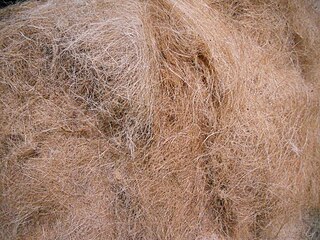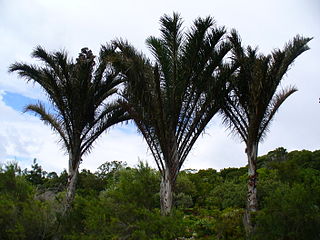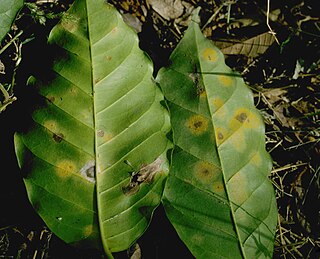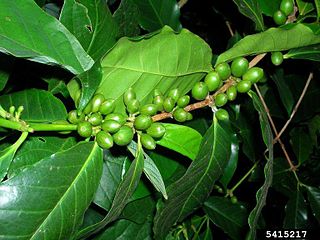
Fique is a natural fibre that grows in the leaves of plants in the genus Furcraea . Common names include fique, cabuya, pita, penca, penco, maguey, cabui, chuchao and coquiza. [1]

Fique is a natural fibre that grows in the leaves of plants in the genus Furcraea . Common names include fique, cabuya, pita, penca, penco, maguey, cabui, chuchao and coquiza. [1]
The Indigenous peoples of the Americas extracted and used the fique fibers to make garments, ropes, and hammocks—among many things—for several centuries before the arrival of Spanish conquerors.[ citation needed ]
In the 17th century, Dutch colonists carried the plant from their Brazilian colonies in Pernambuco to the island of Mauritius. The native inhabitants of the island learned to use the fibre and called it caraguatá-acú, croatá-acu or gravatá-acú.
The fibre was also introduced to St. Helena, India, Sri Lanka, Algeria, Madagascar, East Africa, Mexico and Costa Rica.
In the 18th century, in Dagua, Valle del Cauca, Colombia, the priest Feliciano Villalobos started the first rope and wrapping materials manufacturing industry; his products were made of fique. In 1880 the Colombian government reported a yearly production of three million kilograms of fibres, the exportation to Venezuela of two million, the fabrication of five millions pairs of alpargatas and four million metres of rope.[ citation needed ]
Between 1970 and 1975 the fique industry suffered a crisis brought about by the development of polypropylene, which costs less and is produced faster.
Today, fique is considered the Colombian national fibre and is used in the fabrication of ethnic products, Colombian handicrafts and recently (since July 2007) has been used for the heat protectors (handmade in Barichara) placed around the Colombian coffee cups sold in the Juan Valdez coffee shops worldwide. [2]
The fique can be obtained from several species of Furcraea , such as F. macrophylla Baker, cabuya Trel, andina Trel, and castilla. Depending on the processing of the fiber and the species used, many varieties of fique fibers can be obtained. [3] Among others:
Optimal conditions for the growing of the fique plant are:
Fique crops bring nitrogen to the soil, improving its fertility. The plant is very adaptable to different ecological conditions. A fique plant can produce 1 to 6 kg of fiber each year.

Textile is an umbrella term that includes various fiber-based materials, including fibers, yarns, filaments, threads, different fabric types, etc. At first, the word "textiles" only referred to woven fabrics. However, weaving is not the only manufacturing method, and many other methods were later developed to form textile structures based on their intended use. Knitting and non-woven are other popular types of fabric manufacturing. In the contemporary world, textiles satisfy the material needs for versatile applications, from simple daily clothing to bulletproof jackets, spacesuits, and doctor's gowns.

Sisal is a species of flowering plant native to southern Mexico, but widely cultivated and naturalized in many other countries. It yields a stiff fibre used in making rope and various other products. The sisal fibre is traditionally used for rope and twine, and has many other uses, including paper, cloth, footwear, hats, bags, carpets, geotextiles, and dartboards. It is also used as fibre reinforcements for composite fibreglass, rubber, and concrete products. It can also be fermented and distilled to make mezcal.

Coir, also called coconut fibre, is a natural fibre extracted from the outer husk of coconut, and used in products such as floor mats, doormats, brushes, and mattresses. Coir is the fibrous material found between the hard, internal shell and the outer coat of a coconut. Other uses of brown coir are in upholstery padding, sacking and horticulture. White coir, harvested from unripe coconuts, is used for making finer brushes, string, rope and fishing nets. It has the advantage of not sinking, so can be used in long lengths in deep water without the added weight dragging down boats and buoys.

Jute is a long, rough, shiny bast fiber that can be spun into coarse, strong threads. It is produced from flowering plants in the genus Corchorus, of the mallow family Malvaceae. The primary source of the fiber is Corchorus olitorius, but such fiber is considered inferior to that derived from Corchorus capsularis.
Guanentá Province is a province in Santander Department, Colombia. The province was named after the Amerindian Chief Guanentá, leader of the Guanes, who were the original inhabitants of the region.

Powdery mildew is a fungal disease that affects a wide range of plants. Powdery mildew diseases are caused by many different species of ascomycete fungi in the order Erysiphales. Powdery mildew is one of the easier plant diseases to identify, as its symptoms are quite distinctive. Infected plants display white powdery spots on the leaves and stems. The lower leaves are the most affected, but the mildew can appear on any above-ground part of the plant. As the disease progresses, the spots get larger and denser as large numbers of asexual spores are formed, and the mildew may spread up and down the length of the plant.

Raffia palms are a genus of about twenty species of palms native to tropical regions of Africa, and especially Madagascar, with one species also occurring in Central and South America. R. taedigera is the source of raffia fibers, which are the veins of the leaves, and this species produces a fruit called "brazilia pods", "uxi nuts" or "uxi pods".

Textile manufacturing is a major industry. It is largely based on the conversion of fibre into yarn, then yarn into fabric. These are then dyed or printed, fabricated into cloth which is then converted into useful goods such as clothing, household items, upholstery and various industrial products.

Hemileia vastatrix is a multicellular basidiomycete fungus of the order Pucciniales that causes coffee leaf rust (CLR), a disease affecting the coffee plant. Coffee serves as the obligate host of coffee rust, that is, the rust must have access to and come into physical contact with coffee in order to survive.

Colletotrichum kahawae is a fungal plant pathogen that causes coffee berry disease (CBD) on Coffea arabica crops. The pathogen is an ascomycete that reproduces asexually. The asexual spores (conidia) are stored within acervuli. This disease is considered to be one of the major factors hampering C.arabica production in the African continent, which represents the current geographic range of the fungus. Coffee berry disease causes dark necrosis in spots and causes the green berries of the coffee to drop prematurely. High humidity, relatively warm temperatures, and high altitude are ideal for disease formation. Given the severity of the disease and the lack of effective control measures, there is great concern that the fungus may spread to other coffee producing continents, such as South America, which could have catastrophic consequences.

Agriculture in Colombia refers to all agricultural activities, essential to food, feed, and fiber production, including all techniques for raising and processing livestock within the Republic of Colombia. Plant cultivation and livestock production have continuously abandoned subsistence agricultural practices in favour of technological farming resulting in cash crops which contribute to the economy of Colombia. The Colombian agricultural production has significant gaps in domestic and/or international human and animal sustenance needs.

An arriero, muleteer, or more informally a muleskinner is a person who transports goods using pack animals, especially mules.

Furcraea cabuya is a species of plant in the family Asparagaceae that is native to South America. The fibres in its leaves, known as fique, are used in making ropes.

Curculigo capitulata is a stout herb that belongs to the genus Curculigo. It is known by the common names palm grass, whale back, and weevil lily, and by various synonyms, including Molineria capitulata. It ranges from the Himalayas and eastern India through Indochina, southern China, Malesia, and New Guinea to Queensland and the Solomon Islands. The plant has yellow flowers and oblong, papery pleated leaves with very short stems. In China and India, the plant has traditional uses as medicine to treat diseases such as hemorrhoids, asthma, and consumptive cough. In Southeast Asia, the plant is also used as food wrapping and the fibres are used to make fishing nets, ropes and false hair. However, in recent years Molineria capitulata is more often used as ornamental plants in gardens. In recent studies, M. capitulata was also found to have potential in treating several chronic diseases due to its high antifungal, antioxidant, cytotoxic, thrombolytic, anti-inflammatory, and analgesic activities.

Furcraea andina is a species of flowering plant in the family Asparagaceae. It is native to Ecuador, Peru and Bolivia in South America. The fibres in its leaves, known as fique, are used in making ropes.

Peronospora destructor is a plant pathogen. It causes downy mildew on leaves of cultivated and wild Allium. Allium cepa is most often affected, while Allium schoenoprasum (chives) and Allium porrum (leek) are only occasionally affected.
Furcraea niquivilensis is a plant species native to Chiapas, Mexico.

Sisal production in Tanzania began in the late 19th century by the German East Africa Company. Sisal was continually produced during the German administration and the British administration and was the colony's largest export highly prized for use in cordage and carpets worldwide. At the time of independence in 1961, Tanzania was the largest exporter of Sisal in the world and the industry employed over 1 million farmers and factory workers.

Furcraea tuberosa is a species of flowering plant in the family Asparagaceae. It is native to the Caribbean, and it is naturalized in parts of South Africa. Plants have a limited use as a source of fibre.
{{cite web}}: CS1 maint: archived copy as title (link)